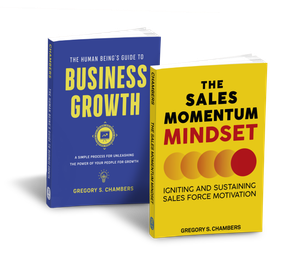The Question Box for Sales Prospecting
The Question Box for Sales Prospecting

Dipping way back into the archive for this one. Sales prospecting. Getting out and building some need around a problem that you solve.
I say this goes "way back" because in my mind I am envisioning a sales person talking to someone face to face or on the phone. How old school is that? No SEO, no PPC/Landing Pages/white papers or webinars. My mind's eye sees my telesales co-worker Dave on his headset clicking the mute switch after every sentence.

Funny stuff.
Back to the question box. Working in that massive call center, every time we bumped into a new product/feature/value proposition the scramble was on to find a way to sell it. From such scrambles a process usually emerges and what follows is the process we used to determine whether or not we should sell to that feature/benefit.

In this crude diagram, you have a process that will get you out in front of people, talking about the things that matter to them and staying away from feature dumps. (you know: "we do this, and this, and that and then this. .. want one?")
It's made up of a box with 4 little arms attached.
It all starts in the middle. The Problem Solved. I'll use Chambers Pivot as a sample here. Before I can fill in the box, I need to ask myself what Problem this product/feature/service helps Solve. (From experience, if you can't answer this question, it's going to be a rough sales process. If you can answer the question but you don't see the problem as important, it's going to be a rough sales process. Just sayin'.)
One of the problems Chambers Pivot solves is "Speed up new product launches". If a new product is stuck on the runway, Chambers Pivot gets it up in the air. Faster.
Armed with that Problem Solved, we can get some questions built. Quickly. Using the Question Box process. (apologies to whomever I borrowed this from. . .it's been many years)
Take the Problem Solved and use these pre-determined "Questions" to come up with a great talking point. For instance:
How do you handle new product launches? What do you do with new product launches that get stuck? What is happening with your latest new product launch? Who is in charge of getting new product launches off the ground?
I know what you're thinking. . . all 4 questions are asking the same thing. Correct.
The reason you come up with 4 ways of asking the same question is because conversations rarely follow a script. When you have 10 problems that you solve and 4 ways of asking about how those problems are handled or if they are even present in the organization you're talking to, you don't sound like a robot. You sound like someone who is listening and thinking about how you can help.
Here's the magic piece of the Question Box.
Write it down.
Like Dr Dave says "WSD: Write Shit Down".
Taking the time to physically write out 5 to 10 problems that your product/service/feature solves and then writing out a minimum of 4 questions does something to your brain. My wife the Professor would say something about learning styles and physical action but all I can tell you is this: after years of managing sales people introduced to this concept: if you write it down, you use it. If you use it, you uncover more opportunities. More opportunities generally lead to more business.
That's the Question Box. I know it's not a monkey in a shearling coat running loose in an IKEA, but it's something.
Good stuff.




